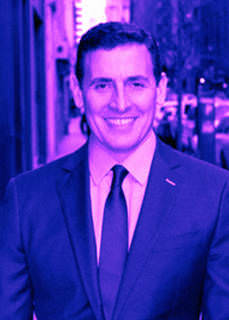Andrew House, president and CEO for PlayStation, is stepping down from the position, though he will remain chairman until the end of the year. Replacing him is John Kodera, current deputy president of Sony Interactive Entertainment.
House has been with Sony since 1990, and has worked with the PlayStation team since the very beginning in 1995. He has led PlayStation’s business strategies for six years, overseeing the launch of the PlayStation 4, the fastest-growing platform in the company’s history.
“When I passed the baton of leadership for Sony Computer Entertainment to Andrew House in 2011, I was confident that I was leaving the PlayStation business in the best possible hands, and so it has proved,” said Kazuo Hirai, president and CEO of Sony Corporation. “I’m extremely grateful to Andy for the great contribution he has made to evolving the PlayStation business, and firmly positioning it as one of the drivers of our future growth.”
“I’m tremendously proud of what we’ve built with PlayStation and Sony Interactive Entertainment: entertaining millions globally with the best in games and creating a fully-fledged digital entertainment company,” said House. “PlayStation has been a huge part of my life for more than 20 years, but with the business having achieved record-breaking success, now seemed to be the right time for me to pursue new challenges.”
Kodera has been with Sony since 1992. He joined their interactive media division in 2010, as senior vice president of corporate strategy for Sony Network Entertainment International, and was promoted to president in 2013.
Airbnb’s chief marketing officer Jonathan Mildenhall is leaving the company to start his own marketing consulting firm. At the home-rental company, Mildenhall oversaw an advertising budget increase of more than 60 percent, including the company’s first-ever Super Bowl spot. His three-year tenure at Airbnb featured the company take firm stances on diversity and inclusiveness and create unorthodox partnerships, such as a print magazine venture with Hearst and a promotional rental Taco Bell.
“I am 50 and I probably have one last chapter of my career left, and I feel I could make a bigger contribution to the marketing industry,” Mildenhall told The Wall Street Journal.
Mildenhall described his new firm, called 21st Century Brand, as small (“20 partners max”) but influential, in a Facebook post on Wednesday.
Before joining Airbnb in 2014, Mildenhall served at Coco-Cola as senior vice president of marketing communication and design excellence, and before that was head of strategy at Mother.
Heidi O’Neill has joined Spotify’s board of directors, as the company prepares to go public in the next few months. O’Neill will not be replacing any current board board members.
Currently, O’Neill runs Nike’s direct-sales business, handling both the brand’s retail and ecommerce units, a position she has held for seven years.
Dairy Queen has promoted Troy Bader as their newest CEO, continuing the company’s efforts to modernize their brand. The current chief executive, John Gainor, will be retiring at the end of the year.
Bader has served as COO for the company for the past six years, and has been with Dairy Queen since 2001.
Marni Walden, executive vice president of global media at Verizon, will be departing the company in February, though she will serve in an advisory role beginning in December. She will be replaced by Tim Armstrong.
“Marni helped build our wireless business, starting as a sales representative in a store, and grew into an inspirational leader and role model for so many at Verizon,” said Lowell McAdam, CEO and chairman of Verizon. “She has most recently spearheaded Verizon’s entry into global digital media and telematics and will leave us in a strong competitive position.”
Facebook announced adding 1,000 new positions to combat malicious and deceptive ads, in response to the 3,000 ads bought by a Russian company meant to influence the US presidential election.
“We use both automated and manual review, and we’re taking aggressive steps to strengthen both,” Mark Zuckerberg said in an interview with TechCrunch. “Reviewing ads means assessing not just the content of an ad, but the context in which it was bought and the intended audience—so we’re changing our ads review system to pay more attention to these signals.”
Ari Segal has joined esports organization Immortals as president and CEO, where he will oversee all business operations both for the holding company and all of its individual teams. The announcement of the hire also revealed the existence of an as-yet-unannounced team for Blizzard’s Overwatch League, based in Los Angeles.
“Ari brings a wealth of knowledge and passion from the traditional sports industry and has a proven track record of building or repositioning brands to connect deeply with fans, particularly in their local markets,” said Immortals CEO Noah Winston. “Innovation, access, transparency and accountability are all hallmarks of his brand-building strategy and management style, making him the ideal fit for this critical role in our organization.”
Previously, Segal worked for the Arizona Coyotes as their CEO, leading the team to a record-setting season for ticket sales and total revenue. Additionally, he led the launch of the San Diego Gulls as their president of business operations, and helped the team win the AHL President’s Award for Business Excellence.
Anthony Scaramucci has announced starting a new media company, entitled The Scaramucci Post. The former White House communications director told The New York Times that the venture is “going to start out experiential on the net.”
The publication currently exists only on Twitter, and Scaramucci reports no plans to host an actual website.
Steve Davis has signed on with Fanatics International as the company’s president. In the role, he will expand the sports merchandiser’s global manufacturing and distribution infrastructure to expand the company’s vertical commerce model outside of North America.
“Steve brings a broad range of commerce and brand-building expertise to Fanatics with a deep understanding of the global retail landscape,” said Doug Mack, CEO of Fanatics. “His leadership will significantly advance our global footprint and expand the multichannel, merchandising and manufacturing capabilities that we provide to all our partners worldwide.”
Before joining Fanatics, Davis was CEO of fast-fashion online retailer Rue La La and head of global operations for GSI Commerce.
Scripps has started searching for a new chief financial officer after the departure this week of Tim Wesolowski. The have appoined Lisa Knutson as interim CFO.
Knutson has been with the independent TV station owner since 2005, and recently had her role expanded to include both the responsibilities of chief strategy officer and chief administrative officer. Wesolowski had worked at Scripps since 2011.
Cadillac’s car-subscription service, Book, has a new global director in Melody Lee. Before her new role, Lee held the position of director of brand marketing for the luxury car company since 2012.
Private spirits giant Bacardi Limited promoted veteran executive Mahesh Madhavan to the role of CEO, taking over for outgoing Michael Dolan. Formerly the leading executive for Asia, the Middle East, Europe and Africa, the brand will continue to look to Madhavan for insights into global markets.
“With more than 20 years at Bacardi, in different roles in different geographies, Mahesh has a tremendous track record of success,” Bacardi Limited chairman Facundo L. Bacardi said in a statement. “He inherits a business that is in great shape, with a healthy balance sheet, revitalized brands, and an engaged team of employees.”
Continuing with a chain of company promotions, John Burke takes on the title of global CMO. Burke will provide leadership and strategic direction for Bacardi’s global marketing organization, which had been led by Dolan in recent years. Burke has been with the company for over 24 years.
Finally, Ignacio del Valle will take on the role of regional president of the Latin America and Caribbean divisions.
InterContinental Hotels Group (IHG) has announced Claire Bennett as the brand’s new CMO. Bennett is moving on after a number of senior marketing positions at American Express, including overseeing global marketing efforts and brand management.
“Claire’s broad and highly relevant brand marketing experience, combined with her deep insight into the hospitality industry, will enable her to provide strong leadership for this critical area of our business, and make a significant contribution to our executive committee,” said IHG CEO Keith Barr.
Condé Nast, owner of media brands like Vanity Fair, Vogue and the New Yorker, has promoted Pamela Drucker Mann to chief revenue and marketing officer, according to The Wall Street Journal. In a corresponding move, chief business officer and president of revenue Jim Norton stepped down from a position he took on in October.
“I led a very successful print product at Bon Appétit,” Drucker Mann said. “But we’re shifting as consumers shift. My number one priority is keeping our momentum going.”
Donna Josephson is joining Corner Bakery Cafe as senior vice president and chief marketing officer. Her 20-year career includes brand management and marketing strategy for restaurant brands like McAlister’s Deli, Wendy’s, Applebee’s, Chick-fil-A and Fazoli’s.
“Donna brings a wealth of experience in strategically building great brands,” said Corner Bakery Cafe CEO Frank Paci. “She is a great addition to our team and we look forward to her leadership in growing the Corner Bakery Cafe brand.”
Bustle executive editor Julie Alvin has been promoted to senior digital director of lifestyle, where she’ll oversee a number of Time Inc. properties, including InStyle and HelloGiggles. Alvin was one of the Bustle’s first editors and is recognized for her contributions to Bustle’s growth.
“A digital and creative visionary who understands how to engage audiences and build digital communities, Julie is the ideal choice to continue to scale Time Inc.’s lifestyle brands and serve readers on multiple platforms,” said chief content officer Alan Murray.
(Editor’s Note: This post will be updated daily until Friday, October 6. Have a new hire tip? Let us know at editorial@alistdaily.com.)
Job Vacancies
| Director, Marketing |
Razer USA, Ltd. |
Irvine, CA |
| Director, Marketing |
Sony Music Entertainment |
New York, NY |
| Brand Manager |
BANDAI NAMCO Entertainment America Inc. |
Santa Clara, CA |
| Director, Product Marketing |
Facebook |
Menlo Park, CA |
| Sr. Director, Enterprise Marketing |
PetSmart |
Phoenix, AZ |
Make sure to check back for updates on our Jobs Page.




